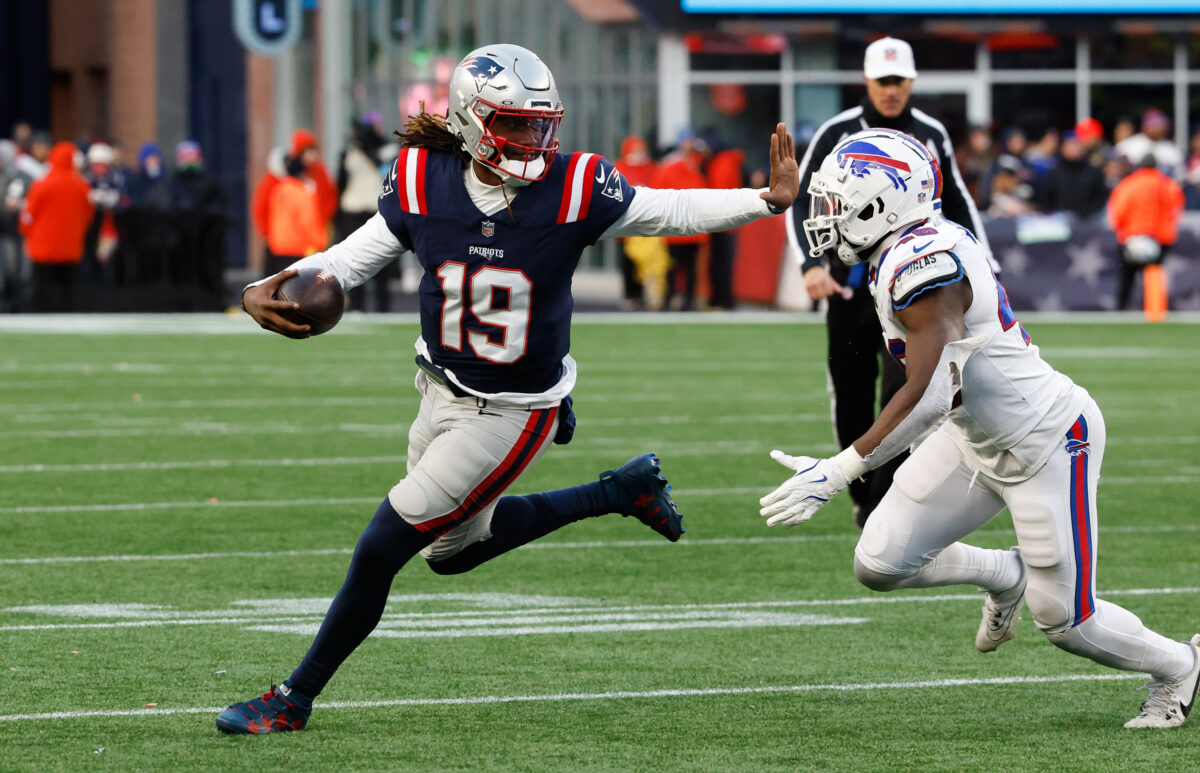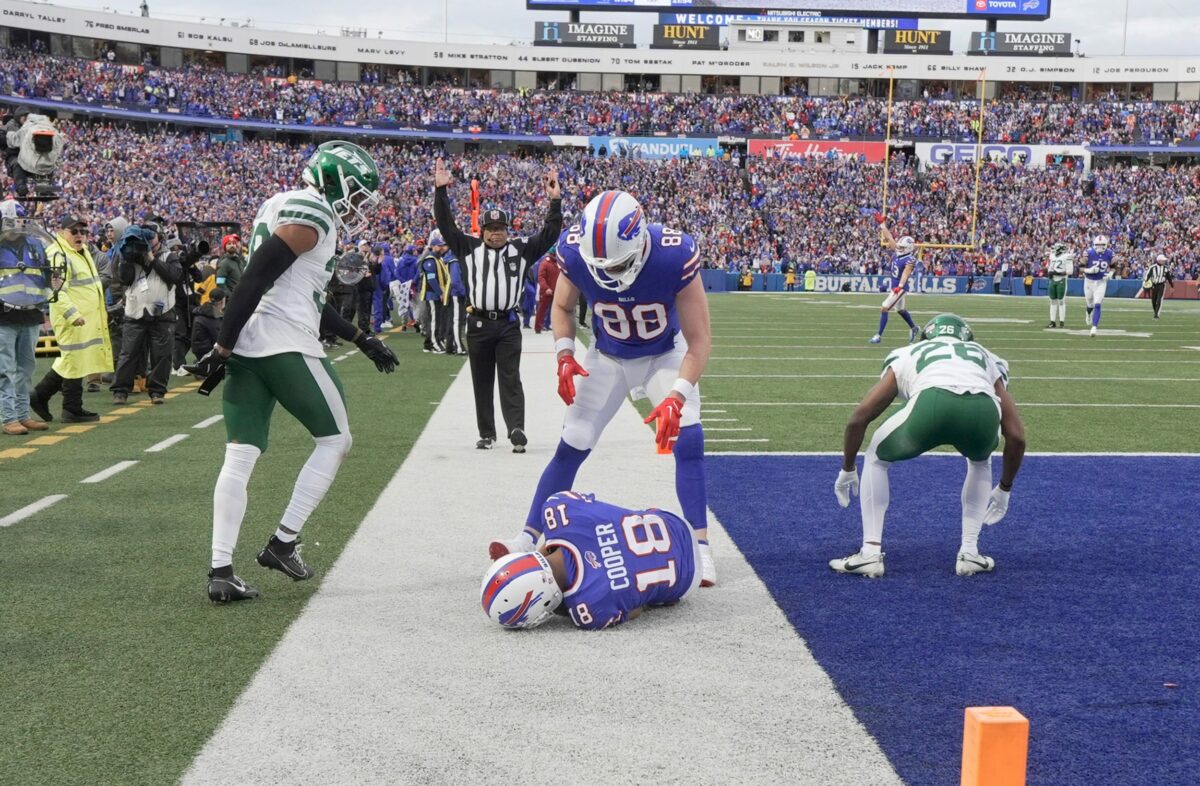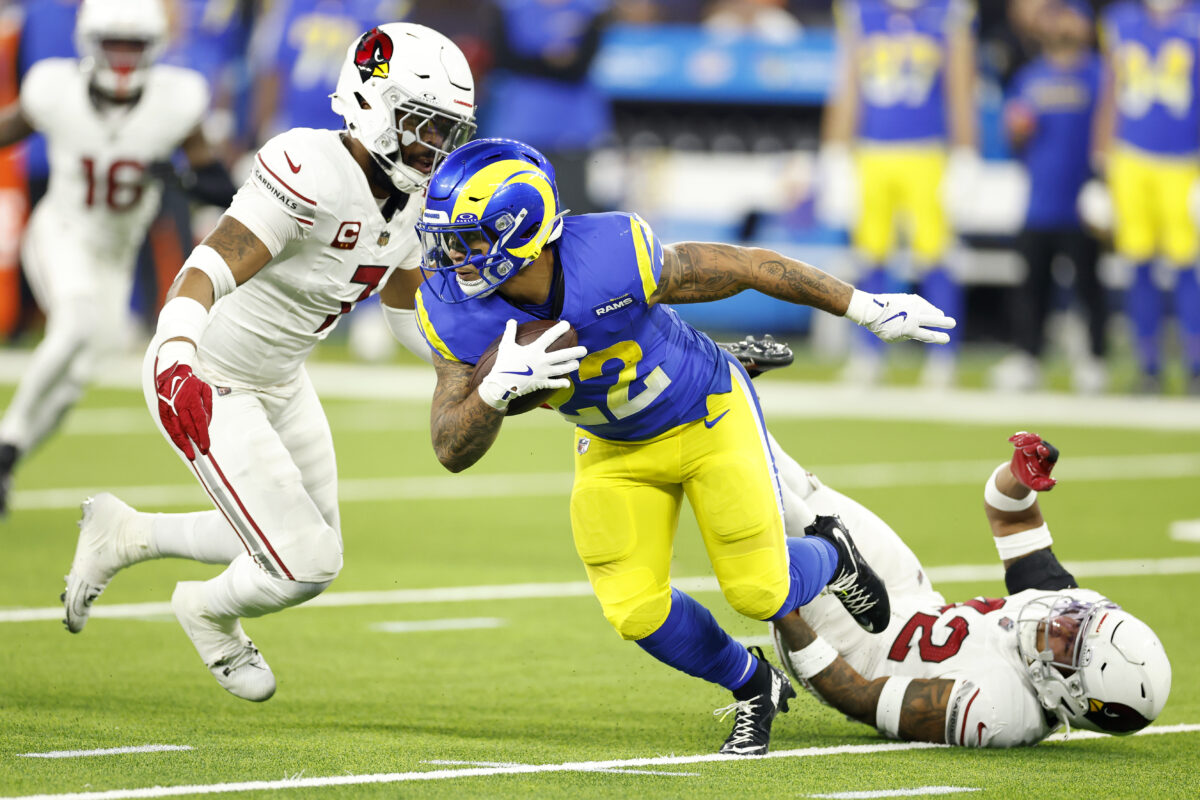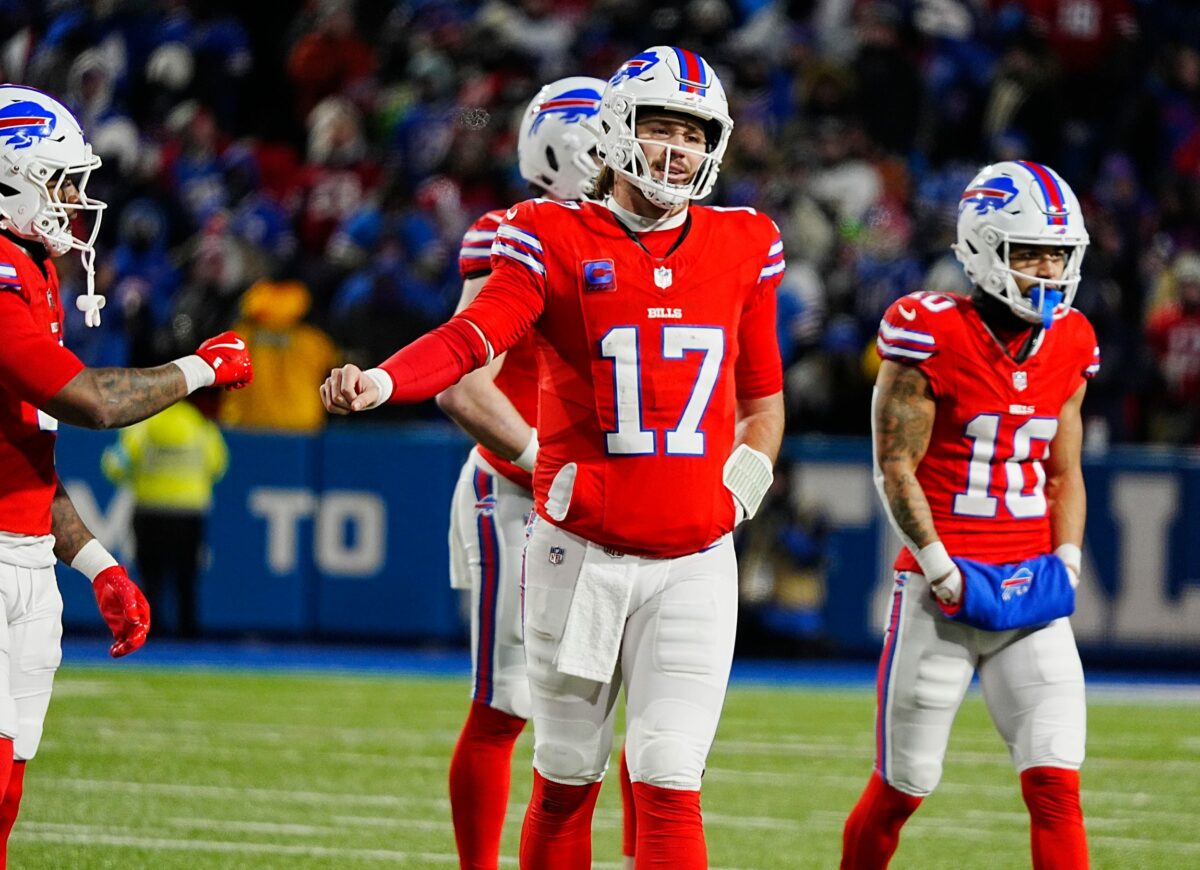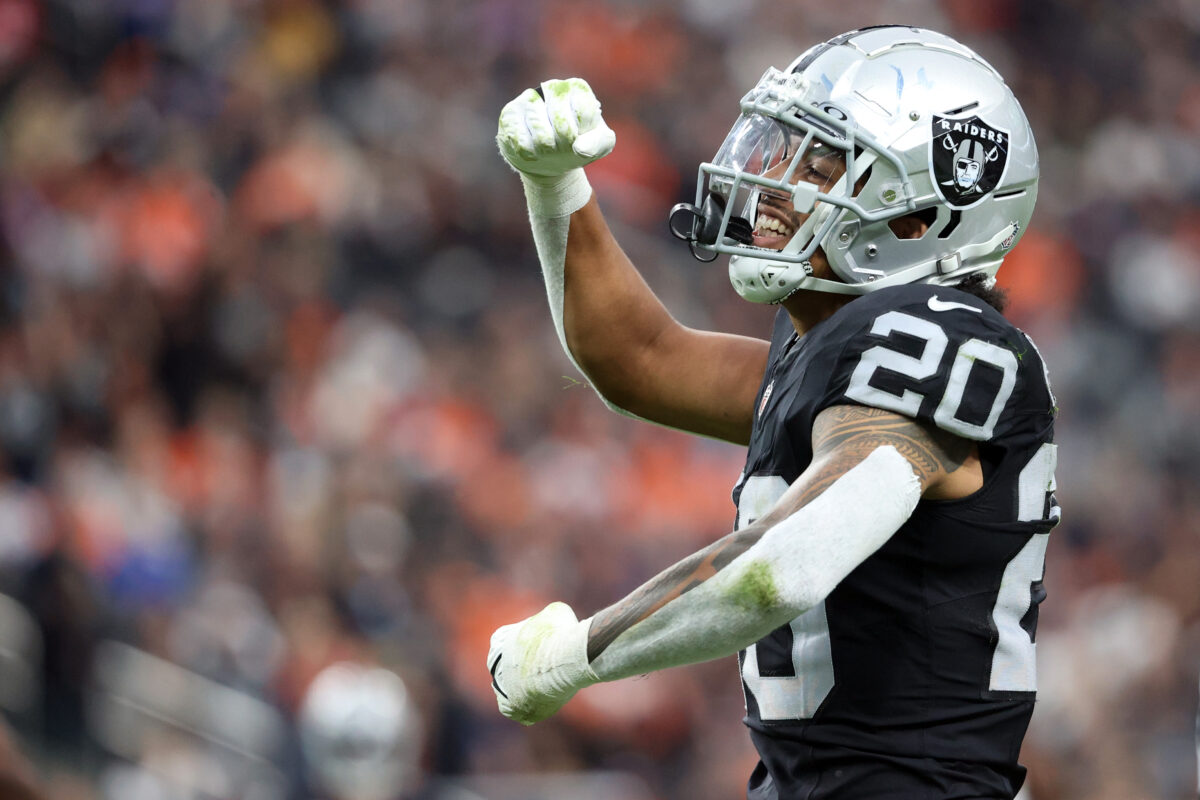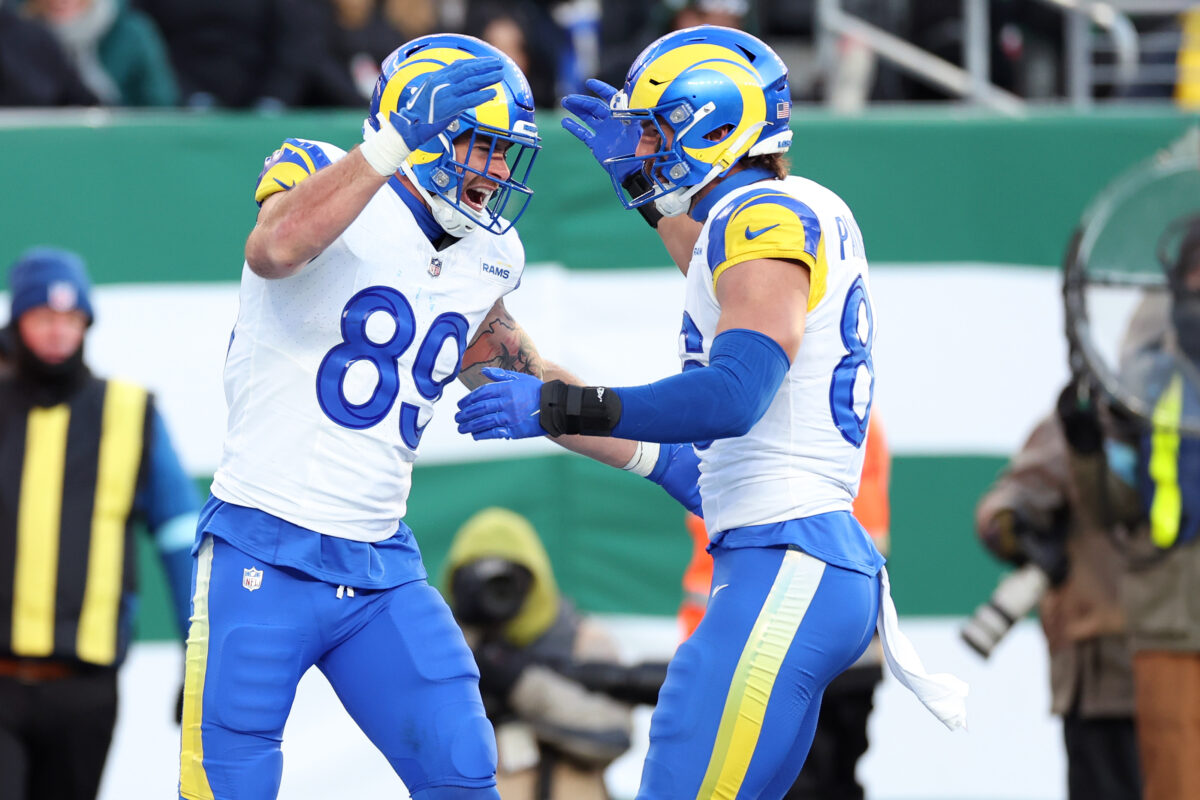Cooper Kupp dropped to WR3 in terms of playing time, seeing his role reduced in the Rams’ win over the Vikings
After resting their starters in the season finale last week, the Los Angeles Rams came out looking fresh and rejuvenated in Monday night’s playoff game against the Minnesota Vikings. Kyren Williams had extra juice, the offensive line was great and the defense played with a ton of speed and energy.
On both sides of the ball, Sean McVay and Chris Shula made notable changes. Offensively, Cooper Kupp saw his role reduced, playing his fewest snaps in a game all season (excluding Week 2 when he got hurt). Tight end usage was up and Kyren Williams barely came off the field until the end of the game. On defense, Cobie Durant went from benched to playing more than half the game, helping the Rams mix and match their defensive backs to counter the Vikings’ pass-heavy script.
Below is a look at the snap counts and playing time from the Rams’ win over the Vikings.
Offense

Matthew Stafford and three offensive linemen played the entire game, with Kevin Dotson and Rob Havenstein getting pulled for the final two kneel-downs in the fourth quarter.
Kupp played just 29 snaps (55%), his fewest in a game that he started and finished this year. The Rams didn’t necessarily replace him with another receiver because Jordan Whittington was fourth on the depth chart with only 11 snaps (10 as a run-blocker), but he did play fewer snaps than both Puka Nacua and Demarcus Robinson. Tutu Atwell was only in for one play, one fewer than Xavier Smith.
Tight end usage was up in this one, which played a part in Kupp seeing fewer snaps because the Rams were in 12 personnel more often. Colby Parkinson was officially the starter and he played 33 snaps, but Tyler Higbee had the biggest impact in the 12 snaps he saw before getting injured. Hunter Long was second with 22 snaps and Davis Allen played 19 snaps as the No. 3 tight end with Higbee injured.
Williams played 46 of a possible 53 snaps and three of the plays he took off were on the Rams’ second-to-last drive when Ronnie Rivers carried it three straight times. He’s the clear-cut workhorse with Blake Corum out.
Defense

It was fascinating to see Shula mix things up in the secondary. Quentin Lake was the only player to play every snap, typically something that also applies to Kamren Curl and Darious Williams, too. Curl played 95% and Williams was limited to only 81%, seeing his role reduced in the second half with Durant playing well.
A total of seven defensive backs played at least 47% of the snaps, showing how often the Rams were in nickel and dime packages to counter the Vikings’ receiver-heavy groupings. Kam Kinchens played 95% of the snaps, his highest rate in a game prior to Week 18, cementing himself as a starter in the secondary.
Durant played 59% of the snaps after being benched in Week 16 and 17, a great sign for him moving forward. Ahkello Witherspoon left early due to a thigh injury but he was on the field for 58% of the plays in the game. Jaylen McCollough was the other defensive back to play a significant role, seeing a 47% snap share in his playoff debut.
At linebacker, Christian Rozeboom only came off the field for seven plays, getting far more snaps than Omar Speights (35). With the Rams utilizing a lot of dime packages, that limited the role of Speights.
Along the defensive line, the Rams rotated guys a bunch. Kobie Turner played the most snaps from that group (40), followed by Braden Fiske (35) and Neville Gallimore (27). Gallimore and Tyler Davis (20 snaps) have overtaken Bobby Brown III on the interior after Brown played just 13 snaps in the win. Even Desjuan Johnson played more, getting 18 snaps.
At edge rusher, Byron Young played 56 snaps and that was even with him leaving the game briefly for an injury. Jared Verse played 52 snaps and made his presence felt on a lot of them. Michael Hoecht played 32 snaps and Keir Thomas subbed in for 11 plays after being called up from the practice squad.









